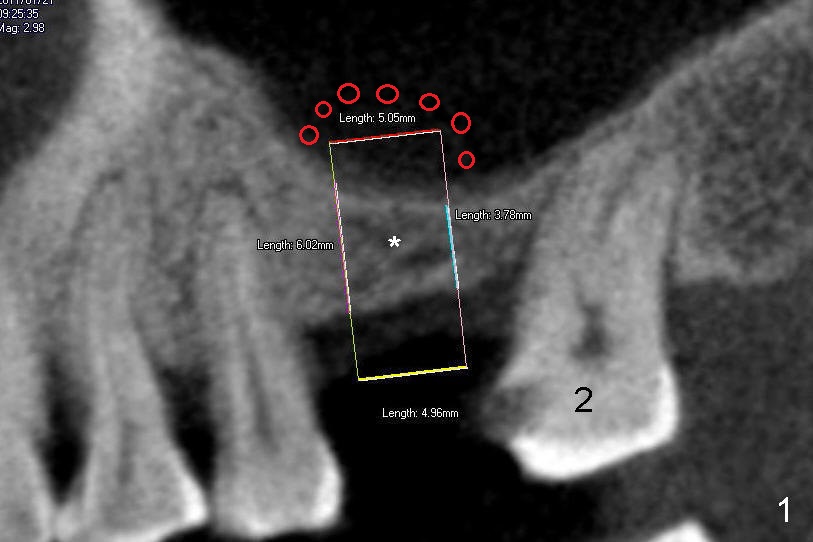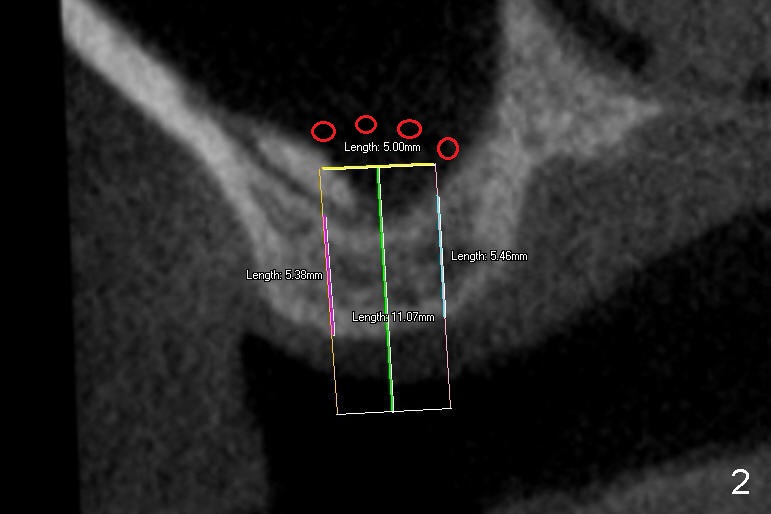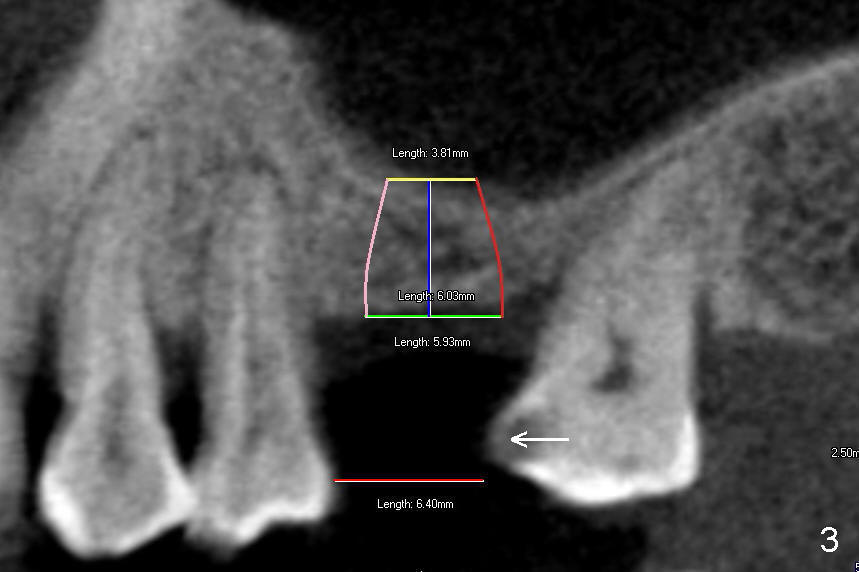



 |
 |
 |
 |
Bone Expansion and Sinus Lift
A 60-year-old man has worn an upper partial denture for a while. We are in a process replacing it with implants. Next step is for #3 and then #2. It appears that bone density in the edentulous region (Fig.1 *) is low; the height is also limited (between 3.78 to 6.02 mm). A cylindrical or tapered soft tissue level implant (4.5 or 5x11 mm) is planned (Fig.1,2). Sinus lift is anticipated (red circles in Fig.1,2 (CT sagittal and coronal sections). The drawback associated with the soft tissue level implant is adjustment of the partial following implant placement.
Alternatively, a bone level implant can be used (Fig.3,4). The shortest implant available is 6 mm, but the smallest diameter is 5.9 mm. As the tooth #2 is affected by periodontitis with mesial drifting (Fig.3 arrow), the mesiodistal edentulous space is quite narrow (6.40 mm).
The possible option is to use a 5 or 5.3x8 mm submerged implant with sinus graft. What happens to the surgery (1)?
Return to
Sinus Lift,
Instrument,
Professionals
第二磨牙即种
Xin Wei, DDS, PhD, MS 1st edition 08/07/2014, last revision 04/18/2021